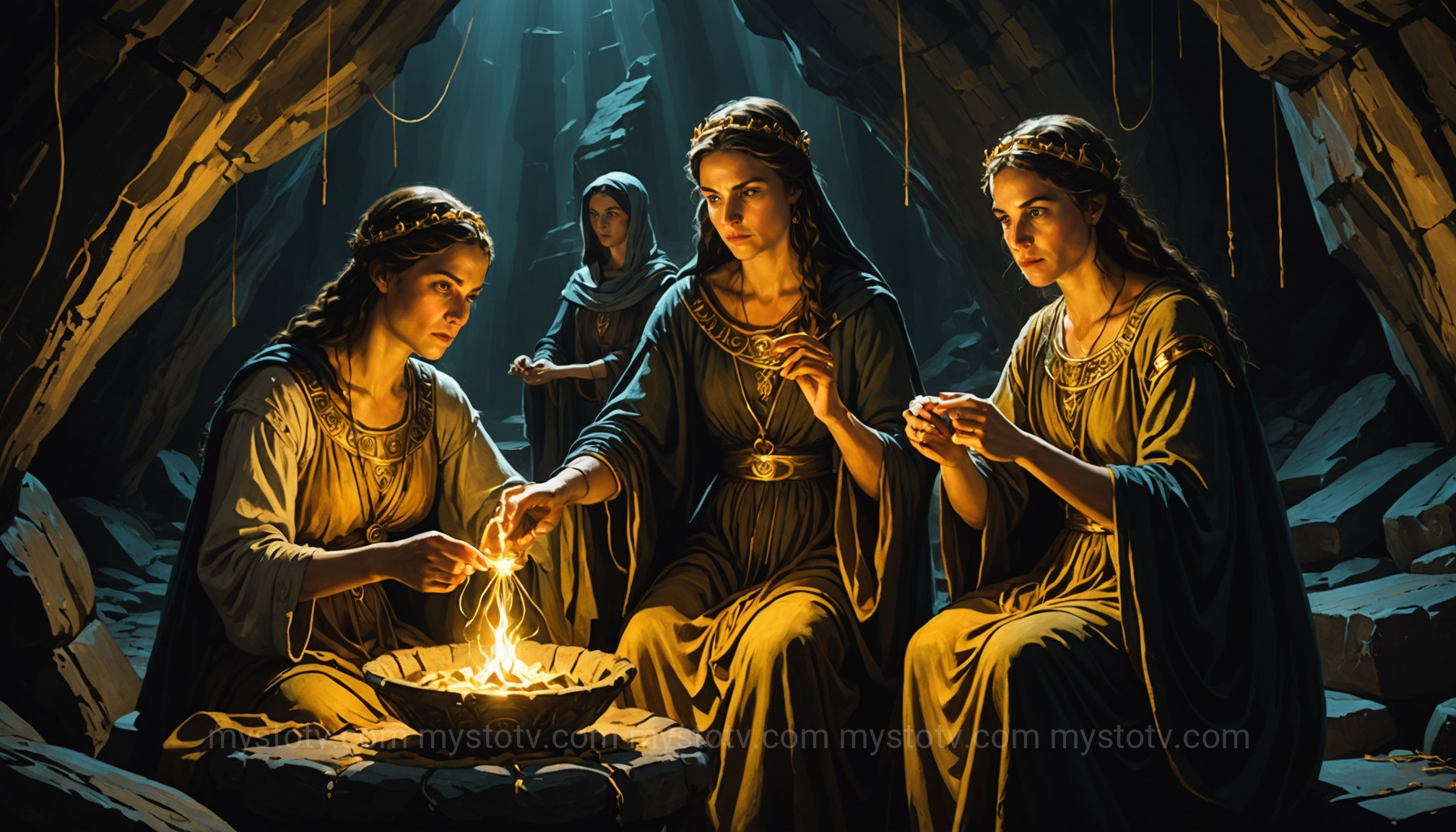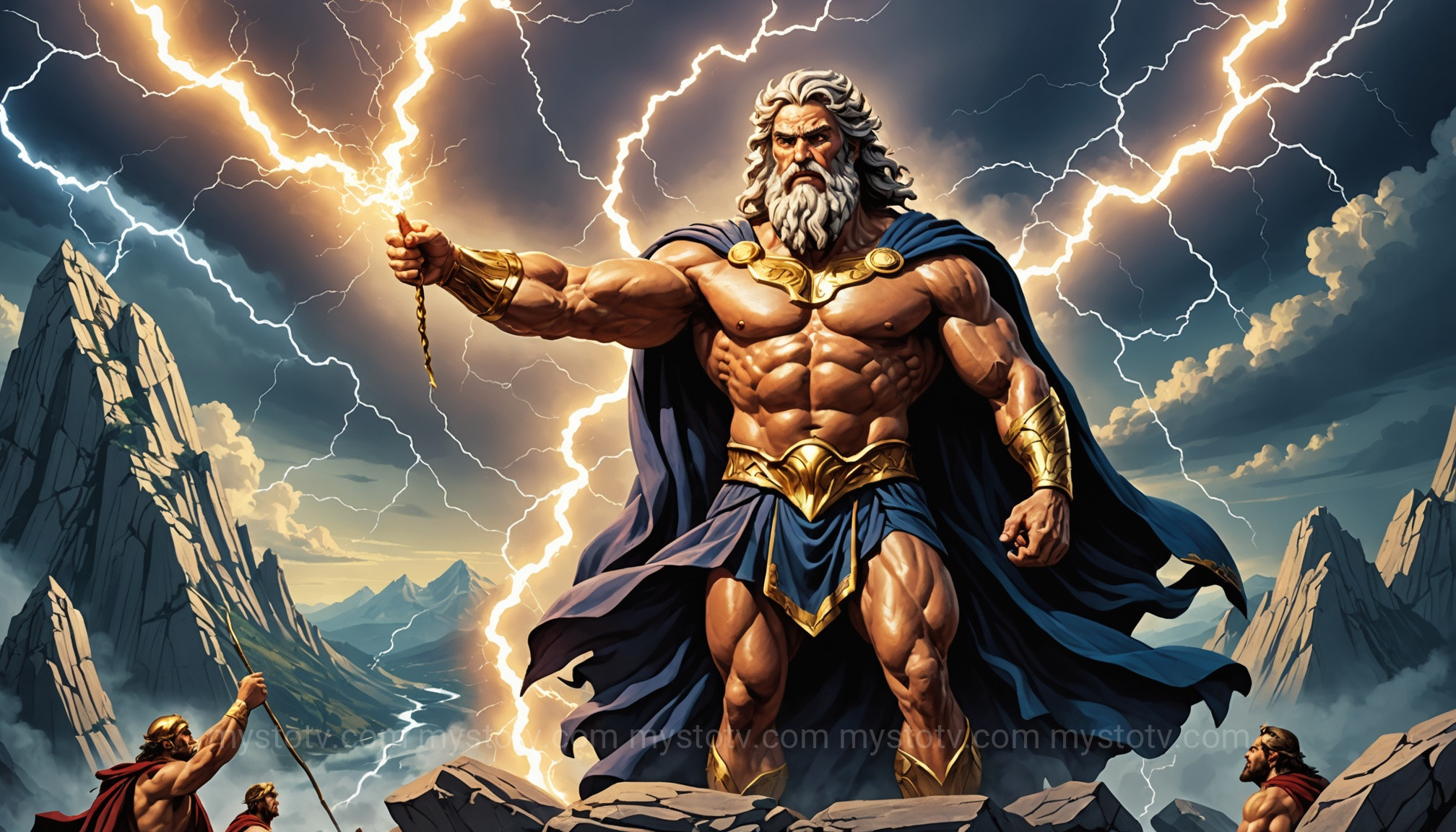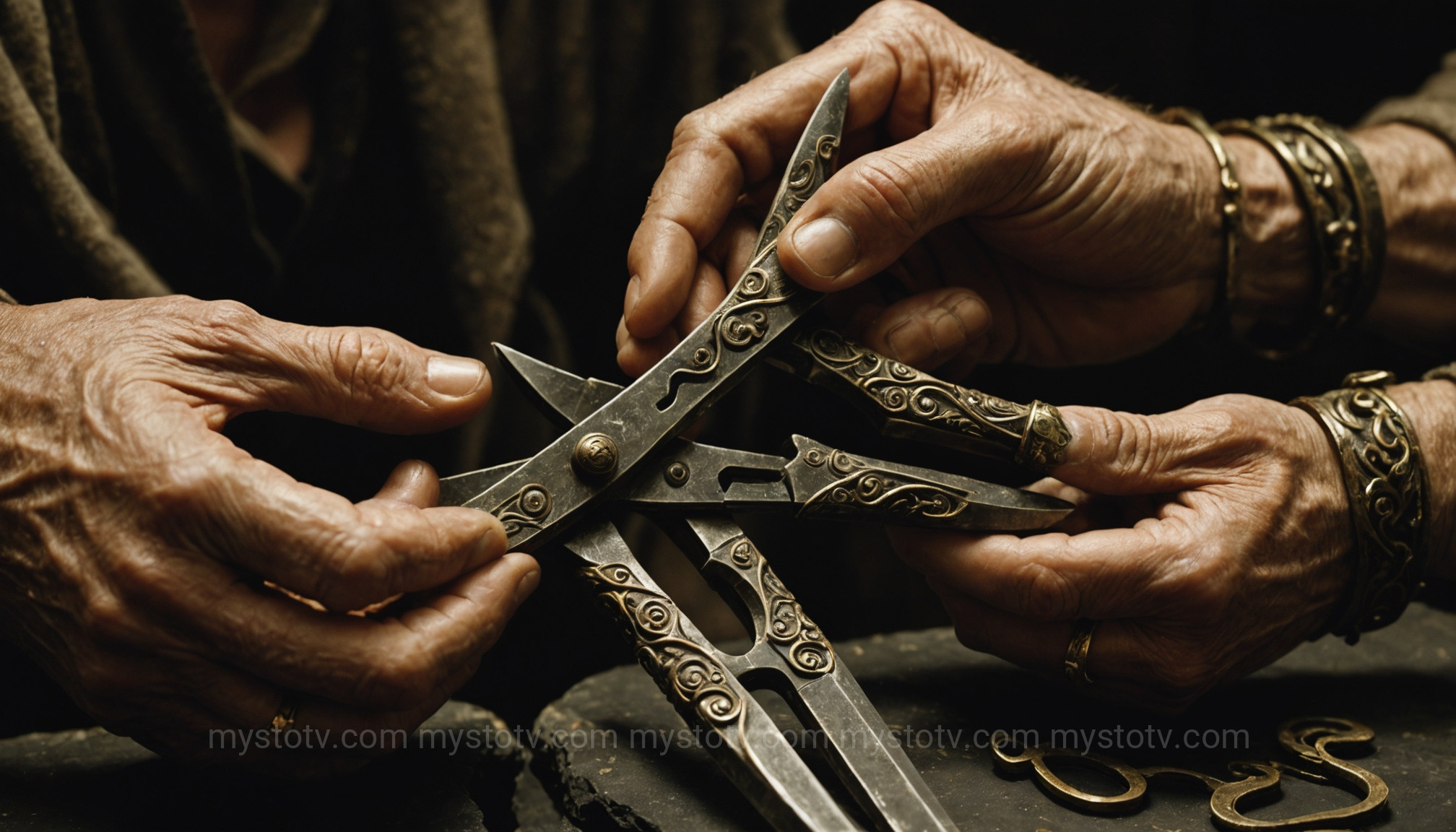I’ve always been fascinated by the concept of destiny. It's a thread that runs through so many of our stories, from blockbuster movies to the quiet anxieties we feel about our own futures. Is our path pre-written, or do we forge it ourselves? This question led me down a rabbit hole into ancient lore, where I found the ultimate arbiters of fate. Delving into the Fates Greek mythology explained a profound truth: in a world ruled by mighty gods, there existed a power even they had to obey. These weren't warriors or kings, but three enigmatic sisters whose quiet work with a simple thread determined the destiny of every mortal and immortal being. Understanding them is key to understanding the Greek worldview itself.
Contents
Who Are the Three Fates? The Moirai Explained

In Greek mythology, the Fates, known as the Moirai (or Moerae), were the three sister goddesses who personified the inescapable destiny of all. Their decisions were absolute and could not be altered by anyone, not even the mighty Zeus. They represented a force more ancient and fundamental than the Olympian gods—a primordial law that governed the entire cosmos. While their appearance is often described as that of old, grim crones, some depictions show them with a range of ages, reflecting the stages of life they control. Let's explore the individual roles that make the Fates Greek mythology explained so compelling.
Clotho: The Spinner of Life's Thread
Clotho, whose name means "the Spinner," is the youngest of the three sisters. She is typically depicted with a distaff and spindle, the tools she uses to spin the thread of life at the moment of a person's birth. She is the origin, the beginning of it all. Clotho doesn't just create the thread; she determines its substance. Is it a strong, golden cord destined for glory, like that of a hero? Or is it a fragile, frayed strand, destined for a short or difficult life? Her act of spinning initiates a being's existence and sets the initial quality of their fated path, making her a crucial first element in any account of the Fates Greek mythology explained.
Lachesis: The Allotter of Destiny
The second sister is Lachesis, "the Allotter." Once Clotho spins the thread, Lachesis takes over. Her role is to measure its length and assign the lot, or destiny, that will be woven into it. With her measuring rod, she determines the lifespan of the individual. But her role is more than just measuring time; Lachesis weaves the events, the trials, the triumphs, and the tribulations into the thread. She decides the path the life will take. The heroes faced with impossible quests, the kings who rise and fall, the lovers who meet against all odds—these are all part of the intricate tapestry measured and allotted by Lachesis. Her work explains the journey between birth and death in the Fates Greek mythology.
Atropos: The Inevitable End
The final and most feared of the sisters is Atropos, "the Inflexible" or "the Inevitable." She is the oldest, the sternest, and the one who carries the "abhorred shears." When Lachesis's measurement is complete, it is Atropos who chooses the moment and manner of death, snipping the thread of life with finality. Her actions are irreversible. There is no appeal, no negotiation. Atropos represents the unchangeable and unavoidable nature of death. While Clotho begins the story and Lachesis writes the plot, Atropos pens the final, unyielding sentence, completing the cycle that has the Fates Greek mythology explained as a total system of life and death.
The Unrivaled Power of the Fates: A Deeper Look Explained

The most startling aspect of the Moirai is their position in the divine hierarchy. They are not merely powerful; they are supreme. Their authority underscores a core concept in Greek thought: not even the gods are above the fundamental laws of existence. This supremacy is what makes the Fates Greek mythology explained a fascinating study in power dynamics.
Dominion Over Mortals and Heroes
For mortals, the Fates' power was absolute. The entire narrative of Greek tragedy often hinges on a hero's attempt to defy their prophesied destiny, an act that invariably leads to ruin. Consider the hero Meleager. The Fates appeared at his birth and declared he would live only as long as a specific log on the hearth remained unburned. His mother, Althaea, snatched the log from the fire and hid it. Years later, in a rage over Meleager killing her brothers, she threw the log back into the fire, and Meleager died instantly, hundreds of miles away. This story is a stark illustration: destiny can be postponed, but never truly avoided. The thread will always be cut.
Authority Over the Gods, Including Zeus
Even Zeus, the King of the Gods and ruler of the cosmos, was subject to the Fates' decree. This is a crucial point of analysis. While Zeus wielded immense power, he was the enforcer of divine law, not its author. The Fates represented that law. In Homer's Iliad, Zeus laments the impending death of his mortal son Sarpedon. He holds his scales of fate and sees that Sarpedon is destined to die. He considers intervening, but Hera reminds him that if he saves his son, other gods will want to save their own, throwing the entire cosmic order into chaos. Reluctantly, Zeus allows Sarpedon's fate to unfold. This moment is pivotal; it shows that Zeus's power is executive, while the Fates' power is legislative and absolute. He upholds their decisions because to defy them would be to defy reality itself.
The Mysterious Origins of the Fates in Greek Mythology Explained
The parentage of the Fates is a subject of debate even in ancient sources, which adds to their mystique. Having the Fates Greek mythology explained properly requires looking at these conflicting accounts. The most prominent source, Hesiod's Theogony, gives two different genealogies.
In one passage, he describes them as the daughters of Nyx (Night), a fearsome, primordial goddess who existed at the dawn of creation. This lineage places the Fates among the oldest, most elemental forces in the universe, born from darkness and preceding the Olympian gods. This origin story emphasizes their cold, impersonal, and ancient power, separate from the more "human" Olympians.
However, later in the same text, Hesiod names them as the daughters of Zeus and Themis (the goddess of divine law and order). This version integrates the Fates more closely into the Olympian power structure. Here, they are not just ancient forces but the children of the king of the gods and the embodiment of law itself. This parentage suggests that fate is intertwined with divine justice and the order that Zeus maintains. Scholars suggest these differing accounts may reflect evolving beliefs about the nature of destiny—from a chaotic, primordial force to one aligned with a structured, lawful cosmos.
Symbolism and Cultural Depictions of the Fates Explained
The Fates are rich with symbolism that has permeated Western culture. Understanding these symbols is essential to grasping how the Fates Greek mythology explained abstract concepts like life, destiny, and death through tangible imagery.
The Thread of Life: Core Symbols

The central metaphor for the Moirai is the thread of life. This single, powerful image encapsulates their entire function.
- The Distaff and Spindle: Held by Clotho, these represent birth and the raw material of life.
- The Measuring Rod: Used by Lachesis, this symbolizes the allotted lifespan and the sequence of life's events.
- The Shears: Wielded by Atropos, these are the unequivocal symbol of death, the final and decisive end.
This thread metaphor is so potent that it has survived for millennia, appearing in phrases like "life hanging by a thread" or "unraveling the thread of a mystery." It provides a simple yet profound way to visualize the predetermined course of a life from beginning to end. These three primordial sisters and their tools created a powerful and enduring symbolic language.
From Ancient Vases to Modern Screens
The Fates have been a persistent motif in art and literature. In ancient Greece, they were depicted on vases and in relief sculptures, often as solemn women attending the birth of a hero or present at a significant mythological event. Plato, in his Republic, reimagines them sitting with their mother, Necessity (*Ananke*), singing in harmony with the music of the celestial spheres, a more philosophical interpretation of their role in cosmic order.
In modern times, they continue to fascinate. They appear in Neil Gaiman's comic series The Sandman as a mysterious trio, in Disney's Hercules as wisecracking but formidable hags, and in video games like God of War, where the hero Kratos directly confronts them to change his destiny. Each portrayal adapts their core function, showing how the fundamental concept of an inescapable destiny, as first detailed in tales of the Fates Greek mythology explained, remains a compelling narrative device.
Frequently Asked Questions About the Fates
Here are answers to some common questions that arise when the topic of the Fates Greek mythology is explained.
1. Could anyone ever defy the Fates?
No. The core of their concept is that defiance is impossible. Greek myths are filled with stories of characters who try—like Oedipus's father, Laius, who attempted to kill his infant son to avert a prophecy—but their actions invariably become the very means by which the fated outcome is realized. The attempt to defy fate is part of the fated plan.
2. Did the Fates have their own destinies?
The myths do not address this directly. As primordial, elemental beings, they seem to exist outside the system they administer. They are the administrators of destiny, not its subjects. They represent a permanent, unchanging law of the universe rather than beings with a linear lifespan.
3. Were the Fates considered evil?
Not necessarily evil, but rather impartial and dispassionate. They were not malicious; they did not take pleasure in suffering. They were simply the personification of a natural, unchangeable law. Mortals might perceive a short life or a tragic destiny as cruel, but for the Fates, it was merely the fulfillment of what was allotted. Their grimness came from their inflexibility, not from malevolence.
References
- Hesiod. Theogony, Works and Days, Shield. Translated by Apostolos N. Athanassakis, Johns Hopkins University Press, 2004.
- Homer. The Iliad. Translated by Robert Fagles, Penguin Classics, 1990.
- Plato. Republic. Translated by G.M.A. Grube, revised by C.D.C. Reeve, Hackett Publishing Company, 1992.
In conclusion, the enduring power of the Fates Greek mythology explained lies in its profound exploration of destiny, free will, and the limits of power. The Moirai—Clotho, Lachesis, and Atropos—were more than just goddesses; they were the embodiment of a cosmic order that even Zeus had to respect. They remind us that in the grand tapestry of existence, some threads are woven with an unalterable design. Their silent, inexorable work with spindle, rod, and shears remains one of the most compelling and thought-provoking concepts to emerge from the ancient world, a timeless meditation on the path every life must follow.